Jeff Vogel is old-school in several different ways. As the owner of Spiderweb Software, Vogel has been an independent game developer since the days of shareware.
Spiderweb, which celebrated its 25th anniversary this year, makes 1980s-style fantasy CRPGs, such as the Avernum trilogy, Geneforge, and the series that started it all, Exile. Each game is primarily written, designed, and coded by Vogel, with assistance from his wife, Mariann Krizsan, and a handful of freelance artists.
Vogel often refers to himself as indie games’ “Crazy Old Uncle in the Attic,” and in that capacity, gave a speech called “Failing to Fail” at the 2018 Game Developers’ Conference. He also caused a bit of controversy earlier this summer with a couple of posts on his personal blog.
Vogel’s newest game, Queen’s Wish: The Conqueror, comes out on September 11. Funded by a successful Kickstarter last summer, Queen’s Wish puts you in the role of the youngest, rebellious child of Queen Sharyn of the Empire of Haven.
Up until the start of the game, your character’s life has been mostly spent partying. One day, without ceremony, you’re sent via a one-way teleporter to the distant, failed Havenite colony on the continent of Sacramentum. Sharyn charges you with bringing Sacramentum back in line and under Haven’s control.
Unusually for a Spiderweb game, Queen’s Wish offers a lot of different paths from here. You can opt to run your facilities like a tyrant, peacefully reforge diplomatic ties with the other races of Sacramentum, or ignore the Queen entirely and go wandering on your own. In another first for Spiderweb, Queen’s Wish also offers the option to rebuild the facilities in each of your allied settlements, using your collected resources to construct, supply, and enhance the shops and services in each one.
On August 29, I sat down for a conversation in downtown Seattle with Vogel and Krizsan to talk about Queen’s Wish, Spiderweb’s business model, and Vogel’s recent adventures in blogging.
(The following transcript has been edited for clarity.)
GameSkinny (GS:) I’m a little disappointed. I judge all fantasy-game character creators on whether or not I can make Lemmy from Motorhead, and you can’t quite do that in Queen’s Wish.
Jeff Vogel (JV): Because our budget for this game is so low, what we had to do was start with a core bit of art and expand it. For example, with the portrait system, there’s enough there to be a base, and get nice rounded faces. If there’s a Queen’s Wish 2 — fingers crossed — we’ll go to the artists and say, okay, now we need more faces, more beards, more this and that.
A Lemmy beard is definitely a good option. Because God knows I need ideas. I’m not an expert on hairstyles. For making these, I just did a Google for “hairstyles,” picked out a half-dozen that looked good, and handed those to the artist.
GS: You told me once that you have all sorts of freelance artists.
JV: Yup, about four main paid freelancers, but we are very, incredibly cheap in our budgeting. So we pull from a lot of good public domain art from all over the place. It tends to give our games sort of a schizophrenic appearance where the art doesn’t entirely blend together. But on the other hand, we can afford them. Keeping budgets low is very important these days for surviving as an indie developer.
GS: So the money from the Kickstarter was the entirety of your production budget on this?
JV: We still had some money kicking around. Pretty much always, the earnings from one game pay for the next game, and our games have super low budgets. It’s because the main product I’m selling is my writing, so the game is just a vector for the storytelling. I’m also pretty good at game systems.
But you know, we’ve never written a hit. We’re never going to write a hit. We make enough money from each game to write the next one, and pull salaries and health insurance out of what’s left.
GS: I got a kick out of that, with your recent blog posts (“I Am the Cheapest Bastard In Indie Games” and “Why All My Games Look Like Crap”) and the reaction to them on Twitter. The fans all reacted with various flavors of stark disbelief, and the pros all said, to paraphrase, “Yeah, that’s about right.”
JV: Our games, like most indie games, are a niche product. I’m only aiming for a small percentage of the gamers. If you show my games to a hundred gamers, 95 of them are going to say, “That looks really gross.”
But five will be like, “Hey, sure, I’ll try that out.” And you know, you can make a really good living out of being a bottom feeder, off of 5% of the gaming market.
GS: I was actually thinking that there are a couple of different people now in the indie space who are working with Patreon —
JV: Oh, yeah.
GS: — and are making a surprisingly good living off of it. These are games that have less development and less of a profile than yours do. I’m surprised you didn’t go there.
JV: I’m old-fashioned. We’re old. We come from a generation where you make a thing and you sell it.
Just moving to Kickstarter was a big step for us, but we treated a Kickstarter kind of like advanced sales, and that’s something we can wrap our old brains around. If it gets to the point where we’re really tight on money, we’re not so proud that we won’t pass the hat around and go onto Patreon, but we’re not quite at that point yet. We still want to make our living from just selling stuff.
GS: I’ve been playing Queen’s Wish. The last game of yours I played before this was the Avernum III remake, and this feels even more self-consciously old-school than that. Most of how you’re moving forward here is being able to put up buildings in your settlements, and the fact that your protagonist this time is actually a character rather than kind of a cipher.
JV: Yeah. You know, fantasy role-playing games are genre fiction. It’s like a novel, and you can approach it in just an enormous amount of different ways. Which is one of the reasons we write fantasy role-playing so much: because it’s a genre that you can do an infinite amount of things with.
As game designers, we believe we’ve barely began to scratch the surface of what you can do with fantasy role-playing games. One of the ways we stay sane writing them again and again is to break up the reality. Sometimes we like to do a game where your main character is a cipher, and then you put your own personality into that character, and in others, you have a specific role, and you have to decide what you’re doing within that role.
In Queen’s Wish, which deals with a very specific sort of political situation, with very different political problems, it really made sense for you to have a specific role that you had to either fulfill or rebel against.
GS: I did like how you’ve surrounded your main character with competence in a way that a lot of games don’t tend to. Most of the NPCs you encounter in Queen’s Wish have their jobs under control and don’t need your help immediately, like the admiral at the entrance to the swamplands.
JV: Yeah, I love that. That was a lot of fun to do. In so many role-playing games, you’re just sort of a lone wolf, wandering around and beating up bozos. I wanted you to be a prince, with everything that comes with that. You’re wealthy, you have power, you have assistants, you have an army, you have forts, you have your own butler…
GS: I like that you can have your butler do a bunch of stuff for you, like give you a haircut, that has absolutely no mechanical benefit.
JV: [laughter] Yeah. A lot of the stuff is just there to contribute to a work of fiction. I love doing lots of things that don’t have game mechanics, that are there to just flesh out the world and make the player emotionally invested. Once the player is emotionally invested in the game, the mechanics are just more meaningful because you care.
GS: I’ve been running around hunting down books to add them to my records.
JV: I wish there were more of those. It’s just that there’s only so much time. It’s the two of us. I wrote most of them, Mariann wrote a bunch of them…
GS: [to Mariann]: I knew that you were his business manager, but I didn’t know you were involved in the creative side until just now.
Mariann Kriszan (MK): I do whatever he doesn’t want to do, or he needs help with. I’m kind of a jack of all trades.
JV: She assists with the design a lot. She often helps build the terrain in the engine, she writes a lot, and I just give her notes at the end.
So Spiderweb’s existed for 25 years. [as if suddenly realizing it] It’s our 25th birthday! Woo!
MK: Woo!
JV: And Mariann started working with me in ’96? ’97?
MK: Yup.
JV: And we’ve been partners ever since.
GS: I knew of your work because I grew up with Apple computers, and 90% of the Macintosh gaming library back then was what you got on the disc that came with copies of MacWorld magazine.
MK: Good times.
JV: Our business exists in large part because, a couple months in, we got our game onto one of those MacWorld discs. The sales boost from that was what enabled us to say, “Hey, this is a thing. Let’s make this a business.”
GS: I remember that the first Exile was one of the first times I ran into a lesbian NPC in a video game. There was a lesbian couple near the start.
JV: I’ve always been big on diversity in video games, in the character casts. Starting from our first game in 1994, you could have an entire party of characters that were female, or who weren’t white. At the time, that was a fairly radical thing. I got a lot of emails from people about it and thought, “Well, this is nuts.”
It wasn’t a big political stance at the time. It was just that I want as many customers as possible, so I want everyone to feel at home. It’s just more of an artistic statement. If I’m making a fantasy world from scratch, I want to have a wide variety of people in it. I want you to be in a world that feels big.
GS: One of the criticisms I saw going around, and I can kind of feel it with Queen’s Wish, is that it’s a four-character party. Why four, rather than more than four?
JV: Our first four games let you have a six-character party, and the last one of those I wrote came out in ’99, I think. Then I switched to a four-player party. In the Avadon games, it’s three characters, but usually it’s four.
I get asked again and again, why not six? It might be a good business idea to switch to six, because most people do four. The answer is: it’s an aesthetic feeling. I can’t put into words how I’m more comfortable playing games and running games with a four-character party.
It’s purely an aesthetic judgement, but part of it has to do with the fact that in my mind, when I’m playing four people, the amount of thought I have to give to each one is divided. It’s easier for me to give these people four identities in my mind than six. If I’m playing with a six-character party, I feel like it’s more of a crowd. I keep losing track of who everyone is and what they can do. If it’s four, I can always keep track of them.
MK: Six is also kind of an army.
JV: Yeah. It makes it trickier to balance.
MK: That’s the other big thing, yeah. Balancing a game is easier with four.
GS: So it’s a personal choice, rather than any kind of code limitation or what-have-you?
JV: Oh, yeah. I could easily do six. It’s just that for doing design and programming, it’s just me. I have to do something to enable my mind to keep a handle on it, because otherwise, I’m already on the ragged edge of being overwhelmed all the time. Sometimes, I just have to say, “I gotta do the simpler thing.”
If you really want to get nostalgic, when I was a teenager, there was a game called Wizard’s Crown where you had an eight-person party. That’s the only game I’ve ever seen that had an eight-person party, and that came out around 1986, then disappeared from the face of the Earth. We learned from it very early on.
MK: Eight people’s just too many.
GS: Now that you mention it, I’ve seen more, but they were in turn-based strategy games rather than RPGs.
JV: One of the things about writing a role-playing game is that you have to be really careful with the cognitive load. A human being can only put so much mental focus into a game. So with Queen’s Wish, there’s a story and characters, and it’s really in-depth — I’m sorry, but I’m really happy with the story and the characters. That’s going to take up some room in the game.
There’s also a construction system, and the game’s system. I have to keep everything at a modest level so it doesn’t squeeze out everything else. I have to leave room in the player’s mind for every element.
GS: I can already tell there’s going to be a point in Queen’s Wish where I’ll hit a brick wall and have to start getting really interested in the construction systems, in order to squeeze out a few more upgrades.
JV: The construction system is fairly simple, partly for that reason. I don’t want people obsessing about their town builds so much. I want them to be going out, killing bozos, doing diplomacy and other stuff.
Also, if you’re playing on Normal difficulty, I always make Normal really easy because that’s by and large what people want. If you play on that, you don’t have to engage with the fort system a lot. You have to do it some, but not a ton. But when you play on Veteran or Torment difficulties, then you really have to know what you’re doing with building houses.
GS: My party build right now is a front-line sword-and-shield guy, then a spearman, an archer/support mage, and then an offensive caster.
JV: Yep. It really supports the standard buildout. With four people, it’s usually two melee, a support, and a mage, or some mix of that. But I’ve been finding in testing that people are coming up with crazy stuff. Someone will come to me and say “Melee is way overpowered in this.”
Someone else will come in and say, “Oh, yeah, magic is way overpowered. Don’t bother with melee at all.” I love when that happens. Everyone thinks they have the one, true build.
GS: I’d feel like magic was more powerful if not for the fact that your area-of-effect spells just munch energy, and that everything has such a high miss chance in the early game. It’s not uncommon for me to catch an entire enemy group with one spell, but miss half of them.
JV: But it’s still worthwhile. Everything just has its limitations.
One of the unique things about Queen’s Wish, which for things like this I really like, is that respecs are free. You can return to town and retrain everything.
So, on the highest difficulty level, when you’re going to an area where you know you’re going to face a certain person, you have to really modify your build. There are abilities that seem really bad at first, like silence, that suddenly on a high difficulty level become necessary for certain situations.
GS: I was wondering about that. You’ve got a lot of tools in this game that don’t seem like they’re necessary now, like all the combat abilities where you have to use up a turn first to set them up.
JV: It’s a buff on your next attack. So, for example, there’s an ability where your next attack does regular damage and stuns. But also, and this is one of the coolest things about it — I really tried to emphasize this in the game, but I’m not sure a lot of people are gonna notice — you can do that with any attack. It’s not just melee.
GS: Oh. No, I hadn’t picked up on that.
JV: So your archers can do that, too, or your mages with their wands. Most people assume that a buff like that is only going to be on their melee weapons, but you can give an archer all of these optional abilities, so they can do crazy stuff all over the battlefield.
GS: I just pictured my archer suddenly pulling out Green Arrow’s boxing glove arrow.
MK: [laughter]
JV: Or just aiming it in such a way that it hits them in the head. Everyone’s going to have their own mental picture.
I really like that system. I don’t think a lot of people are going to notice that system, but what can you do?
GS: Well, now that you’ve told me, and I’m planning to run this interview, that’ll be something.
JV: Yeah. Y’know, I’m old, and I’m burned out.
GS: I was wondering about that, and some of the tweets you’ve made. I know a few people who are looking forward to Queen’s Wish, but one of the things they’ve talked about is that every so often, you tweet about how tired you are, and it worries them.
JV: Okay, first of all, no one should feel bad about me. We’re living a great life. Nobody should feel the slightest bit of pity for us in any way.
A lot of the reason I’ve been saying I’m so tired is because, with this game, I really wanted to prove I’m not a hack. I’m not burned out. I’m not out of ideas. I’m not just sort of coasting on past glories. With this game, I wanted to leave everything on the field. And it’s been exhausting.
I’ve been working on this game on and off for five years. I first had the idea for this game five years ago.
GS: Yeah, we talked last year, when you said you were about to do the Kickstarter. I wasn’t expecting to hear that the game was done for a while yet, let alone that you’d have something playable as soon as you did.
MK: A lot of the stuff was already done on paper.
JV: I’ve heard some people call the Kickstarter a glorified shit post. I’m like, “Oh, my God, we worked on this Kickstarter for months.” Like, the video on the Kickstarter page?
MK: [knowing laughter]
JV: I had to program the game to make that. I love it so much. It’s like a vertical slice of the entire game. All of the systems are in that.
Making the Kickstarter took forever. But the thing is, it showed. For the people who were paying attention and cared about what we’re doing, it showed, and that’s why the Kickstarter made so much money.
So by the time the Kickstarter came out, we were already… [groans in mock fatigue]
MK: And then you can’t stop.
JV: And then you’re like, “OK, now it’s time to do the real job.”
[laughter]
GS: I know a lot of people who really appreciated the Scroll of Absolution Kickstarter bonus, where you forgave people for ever having pirated one of your previous games.
JV: Yeah, that was something that did really well.
We’re probably going to keep Kickstarting games. The indie games business in 2019 is so ugly and murderous that you cannot afford to let any angle go past, and Kickstarter is a chance to do advanced sales, and sell Scrolls of Absolution. It’s just a little extra safety margin, to get a little extra money, which is necessary.
We added in Kickstarter the ability for backers to contribute designs, to create items, characters, and quests, and I have to say, that has been fantastic. I was worried.
MK: We were like, “Oh, no. What are we opening the doors to here?”
JV: But the items we got, the characters, the ideas, were just solid gold. I was reading these ideas, and I was like, “I’m getting blown out of the water. I’m getting put to shame. I can’t wait to put this stuff in the game. This is fantastic material.”
GS: You apparently have an impressive fan base.
JV: Yeah. I didn’t get ideas for lore from them. I got things like, “I want an item that does this, or one item that does this sort of thing.” So all the best weapons and items in the game are based on user suggestions.
Then someone said, “I want an item that does this, but also has this weird side effect.” I said, “Okay, I’m gonna have to go into the engine and reprogram this, but it’s such a cool idea. Hell yeah, this is great.”
And the quests. One person made his backer quest with his kids, and what they came up with… it’s just silly and weird and really big. He wrote to me and said, “This is so goofy. My kids came up with it. I’m not sure you’re going to want to put it in.”
I’m like, “Oh, no. This is totally going in. It’s nuts, but it’s really neat.”
GS: So, out of curiosity, let’s say someone comes forward with a lot of money, somebody trustworthy, and says, I want to bankroll your next project. Suddenly, you have a budget. You can hire people. What would you do?
JV: I’d want one or two real artists. I’d want a coder who’s good at programming art, because the thing is, a lot of the problem with our visuals is not just not being able to afford art, but having a person who’s good at programming art. Maybe I’d get somebody who’s good at programming Unity, so I can make that switch.
I’m actually pretty good at managing people. I have to manage a million freelancers all the time. I’m constantly giving people directions. My freelancers tend to really like working for me. They do it for a long time.
If you gave me a budget, I’d hire artists, and a sound designer, and programmers, and an extra designer who’s really good at writing. I could be very comfortable sitting at the top and just spinning out the story, but with enough backup and support to really do it justice and give it a lot of detail. It’s a beautiful dream.
But you know, there’s no shortage of good designers. People will sometimes ask me, “Why don’t you sell out? Why doesn’t someone steal you away and put you in charge of a larger product?” Because, you know, you throw a bunch of money at me, I’ll write you a crackerjack roleplaying game. But a lot of people can do that. There’s a million designers out there.
GS: With the sheer density of video game studios in Seattle, especially right now, I’m surprised no one’s tried to grab you.
JV: No, everyone gets their designers in house. Being a designer is the dream. That’s the ice cream slot. Everyone wants to be the one who does that. If Microsoft or Bungie wants to design a game, they’re almost never going to pull someone from outside, because they’ve got a million people right outside their doors clamoring for that job, and a bunch of them are probably just as good as me.
If a company wants to write a role-playing game — well, God help them, because it’s a difficult genre to make money in under any circumstances. [as an aside] Rest in peace, Bioware. There’s going to be someone inside the company who’s just going to be champing at the bit to write their roleplaying game for them.
GS: I was playing Queen’s Wish last night, and it really made me realize the degree to which this sort of game hasn’t even really fallen out of style, but has just gotten hybridized with everything else.
JV: And that’s what keeps us in business, to a large extent. We treat video games, role-playing games, as a storytelling medium first and foremost. We want a really good story with lots of words.
Indie game developers do best when they pick up the genres that the larger companies have dropped. Right? I’m a bottom feeder. I look for a niche that is not being served elsewhere, and I serve that. The industry is moving away from games with lots of words, but there’s still a demand for that. There will always be a demand for that. So that’s what we satisfy.
When I go to Mariann and say, “We need more words,” nobody else is saying that.
MK: That’s true.
JV: Everyone else is trying to get rid of the words.
GS: I can’t imagine trying to translate one of your games.
JV: It’s just never going to happen. It’s not worth it.
MK: Too many words.
JV: Localizing one of our games to French or what-have-you would cost a fortune and take a lot of time. It’s just not worth it. That’s another reason why we’ll probably never be on consoles, because they tend to want games that are very “localizable.” You can get a game that’s all English on a console, but it’s hard.
GS: Honestly, I want to get Queen’s Wish working on a gamepad. I feel weird about click-to-move.
JV: We’re working on it. Already, today, I’ve spent some time prototyping the interface for Queen’s Wish for iPhone. It’s going to be our first game on the iPhone. I don’t know how well it’s gonna work, but we’re gonna give it the old college try.
GS: I remember seeing a lot of people who were happy about your previous games being available on mobile.
MK: It’s a good medium for it.
JV: It goes really well, it’s portable, and it’s neat. It was a Kickstarter goal to get Queen’s Wish on the iPhone. So we’re gonna work on that really hard as soon as the game’s out, and get the port out on iPad and iPhone by the end of the year. I’ve already started laying the groundwork, but really grinding out the code will start after the game comes out on Windows and Mac on [September] 11, via all the standard stores. Steam, GOG, Itch, our site. Not Epic.
GS: You’re not putting it on the Epic Games Store?
JV: [cheerfully] Nope!
Well, you know, I’m not going to lie. If Epic walked up to us and offered us a gigantic bag of money so we didn’t have to worry about earnings for a couple of years, I’d take that deal. Every indie would take that deal. This business is terrifying.
GS: [laughter]
JV: Everyone here is three bad days from going out of business. Of course everyone’s going to take the Epic money bag. It’s just that I’m not good enough for it. Our games are too niche and too low-budget to get into that club. But you know, no hard feelings.
Queen’s Wish: The Conqueror is available for sale on September 11.

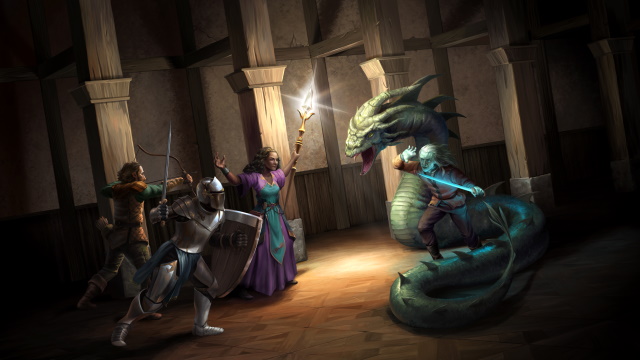

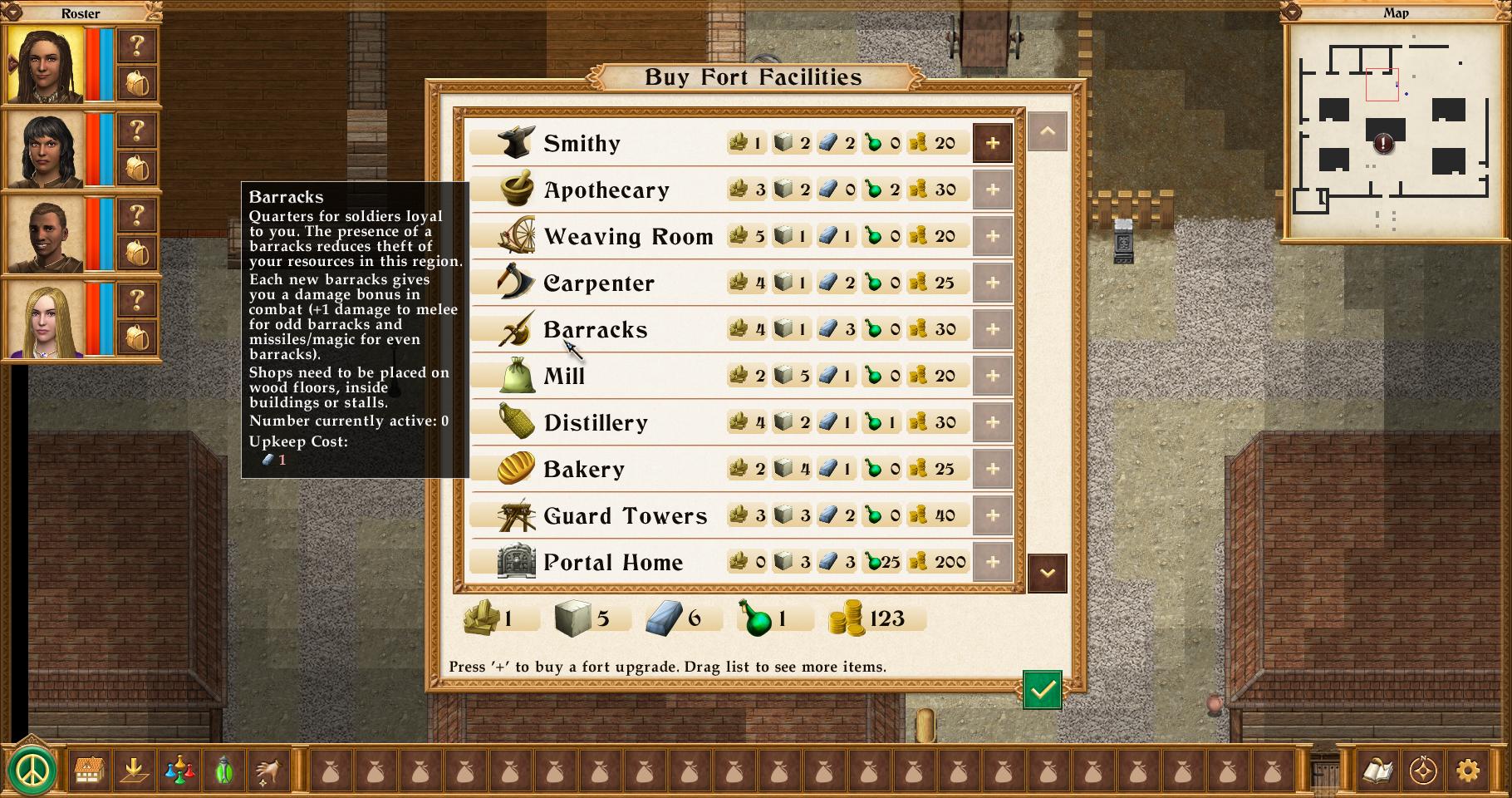
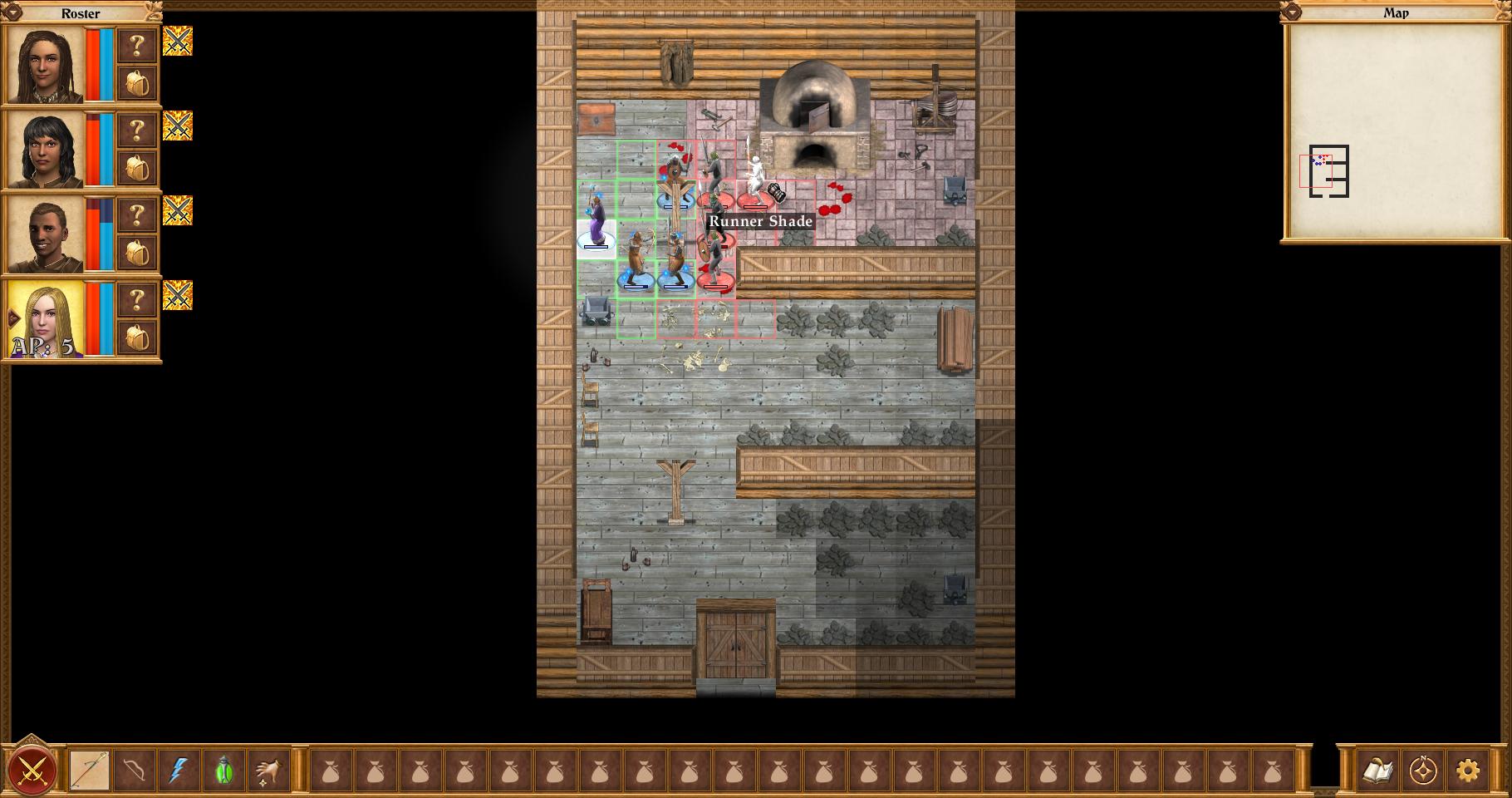

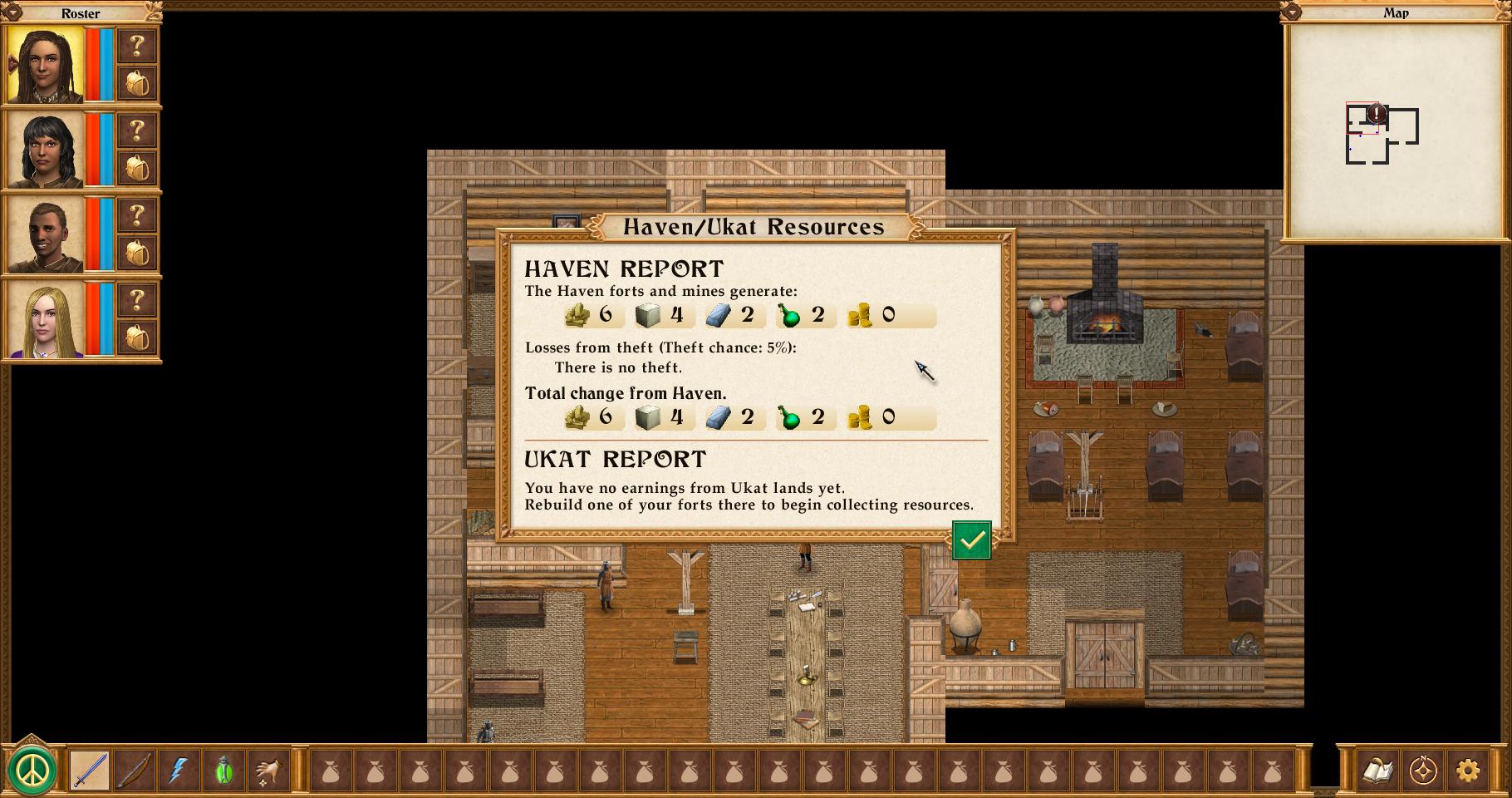
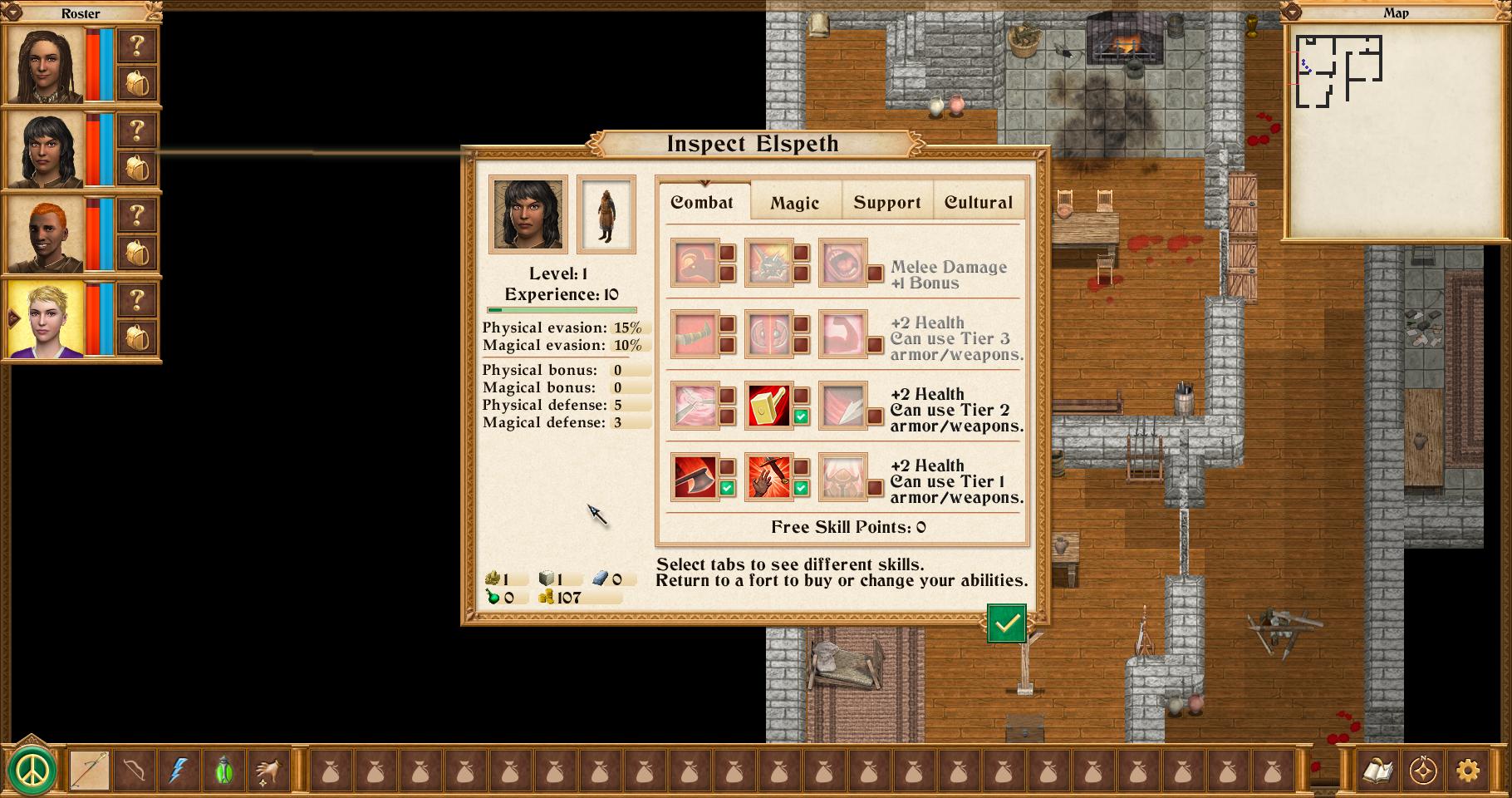
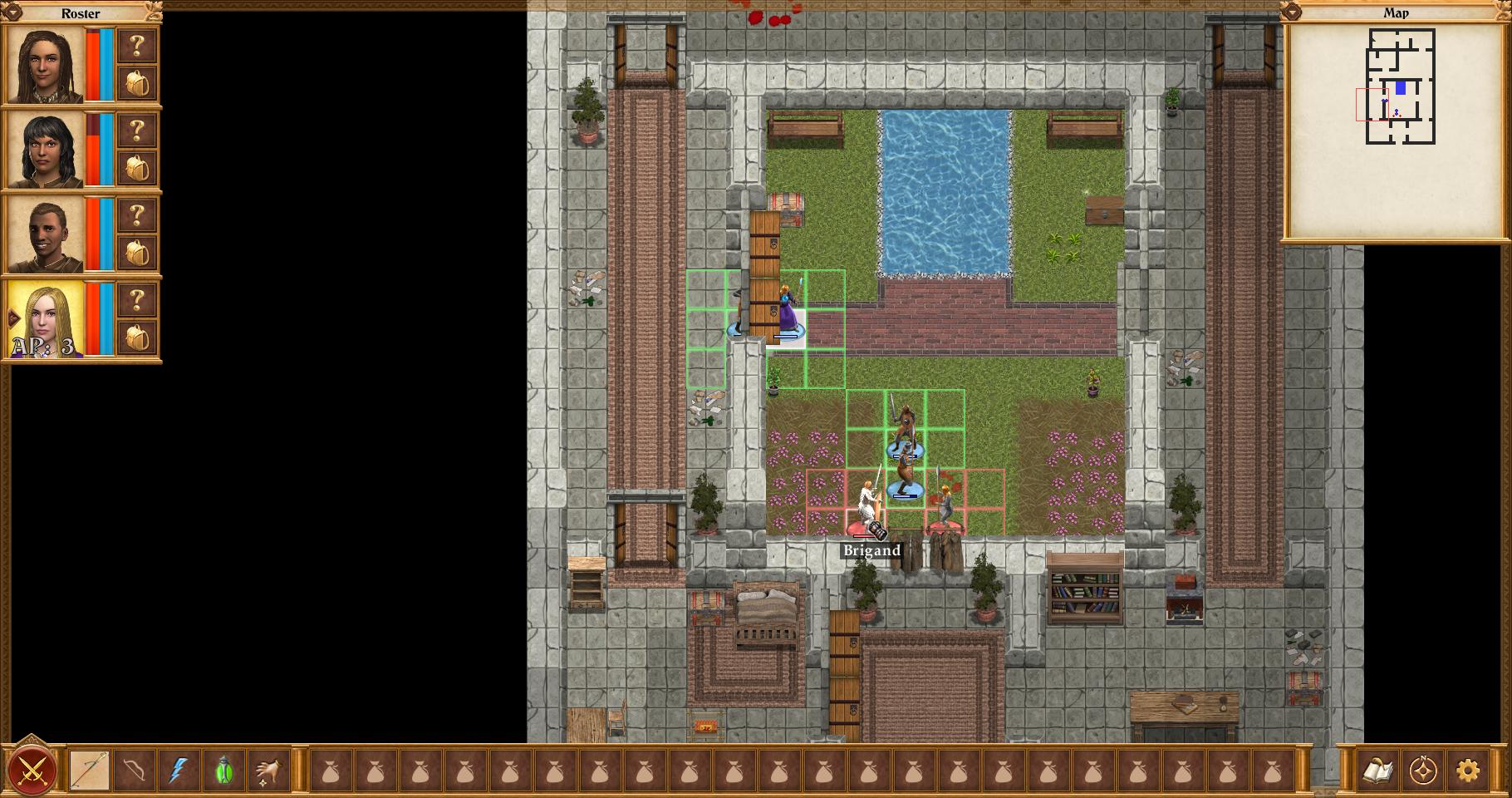
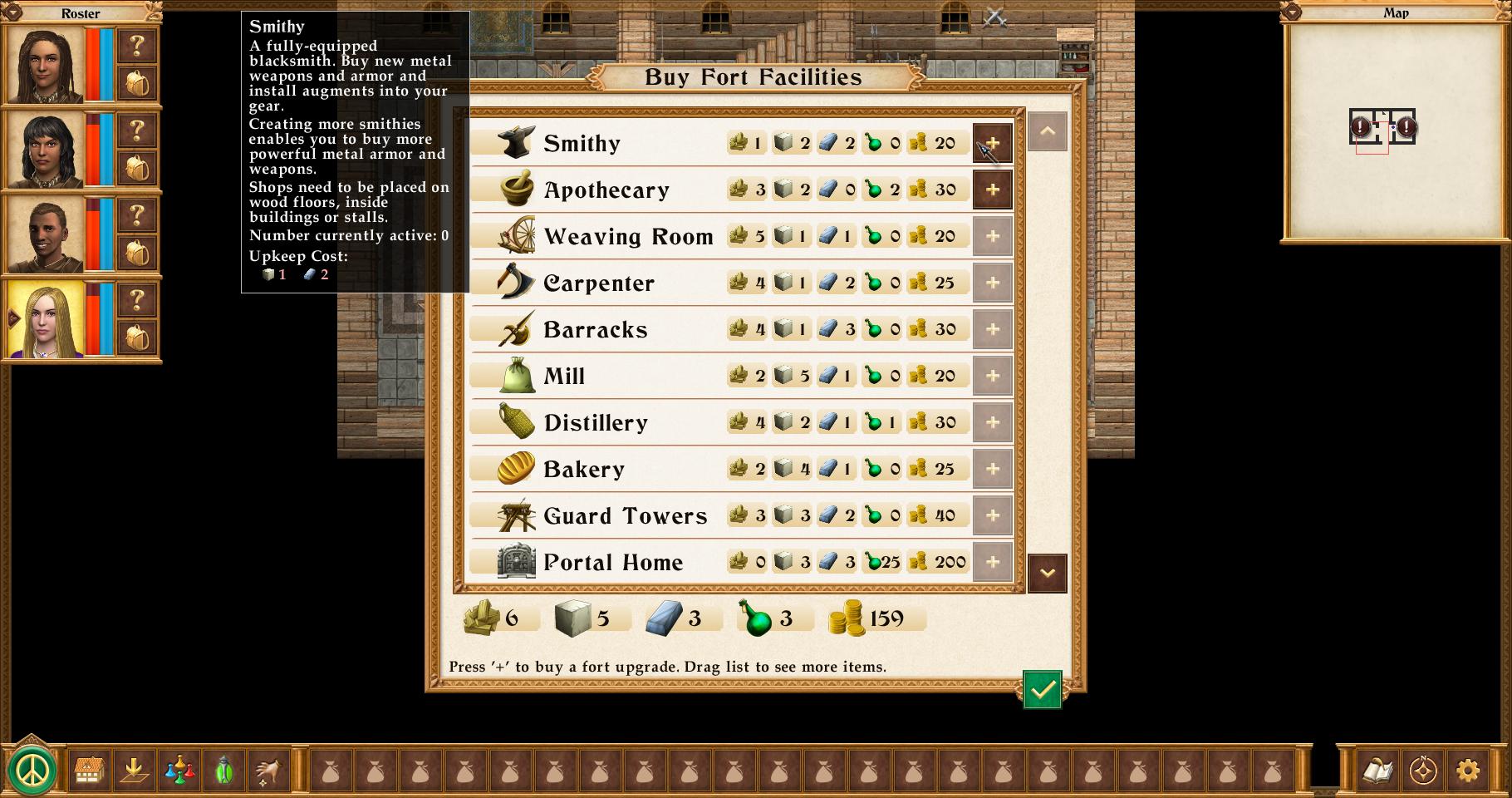





Published: Sep 7, 2019 03:50 am